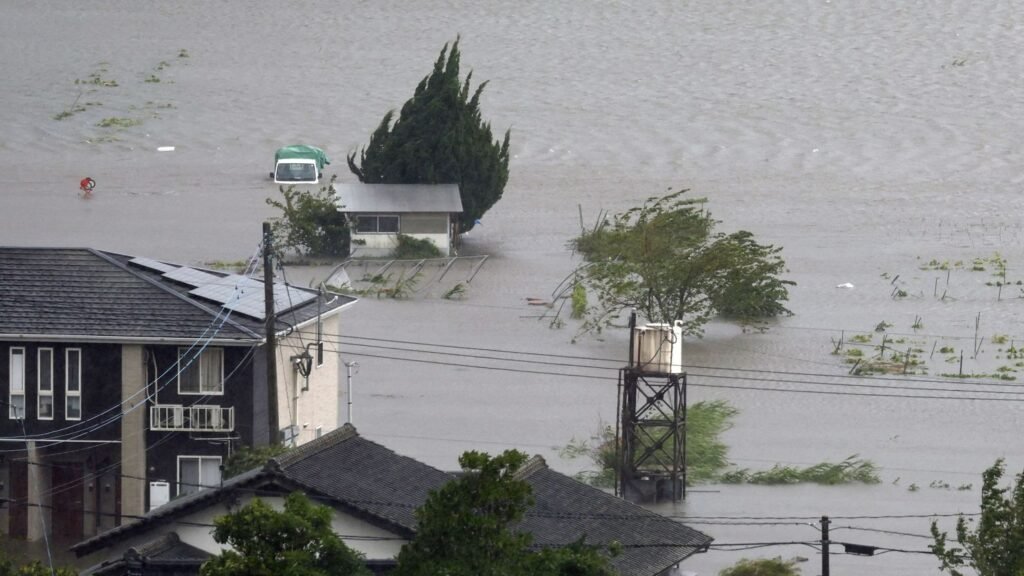Typhoon Shanshan
Typhoon Shanshan has unleashed severe devastation on southwestern Japan, prompting widespread evacuations and causing significant disruption across the region.
The powerful typhoon made landfall on Thursday, bringing with it fierce winds and torrential rain that have wreaked havoc on infrastructure and daily life.
Authorities have issued evacuation orders to millions of residents as the storm battered the region with gusts reaching up to 180 kilometers per hour. This intensity has been strong enough to overturn moving trucks and cause extensive damage.
At least three fatalities have been reported, and numerous injuries have been sustained, with the number of injured reaching 45 according to the disaster management agency.
The impact of Typhoon Shanshan has been substantial. Power outages have affected over 200,000 households across seven prefectures, particularly in Kyushu.
Despite the storm’s intensity, Kyushu Electric Power Co. has reported no immediate issues at its Sendai Nuclear Power Plant in Satsumasendai city, where the typhoon initially made landfall.
Renowned Japanese automakers have been forced to suspend operations at their domestic plants due to the storm’s effects. The typhoon’s severe weather conditions led to the closure of major factories and disruption of industrial activities. In addition, some factories have temporarily halted production as a precautionary measure.
The storm’s destructive power was vividly illustrated by the experience of Tomoki Maeda, an employee at a funeral parlour in Miyazaki city.
While inside a hearse, Maeda witnessed the storm’s fury as it shattered windows, downed power lines, and damaged buildings. “I’ve never experienced such a strong wind or tornado in my 31 years of life,” Maeda told Reuters.
The typhoon’s path has been moving northward, reaching Unzen city in Nagasaki Prefecture by 3:00 pm on the same day. The storm is expected to continue its advance, potentially affecting central and eastern regions, including Tokyo, over the weekend.
In response to the storm, more than 5.2 million people have been issued evacuation notices, primarily in Kyushu but also in parts of central Japan. The heavy rain from Typhoon Shanshan has also triggered landslides, compounding the disaster’s effects.
Madoka Kubo, a hotel operator in the historic city of Hitoyoshi in Kumamoto prefecture, reported that her hotel had to cancel all reservations due to the storm and is now providing shelter to elderly evacuees from nearby areas.
The storm has also caused significant disruptions to transportation. Nearly 800 flights have been canceled, and train services across Kyushu have been suspended. Additionally, hundreds of bus and ferry services have been halted, leading to widespread travel chaos.
Typhoon Shanshan follows the recent impact of Typhoon Ampil, which also led to power outages and evacuations earlier in the month, highlighting the growing challenges posed by severe weather systems in Japan.


